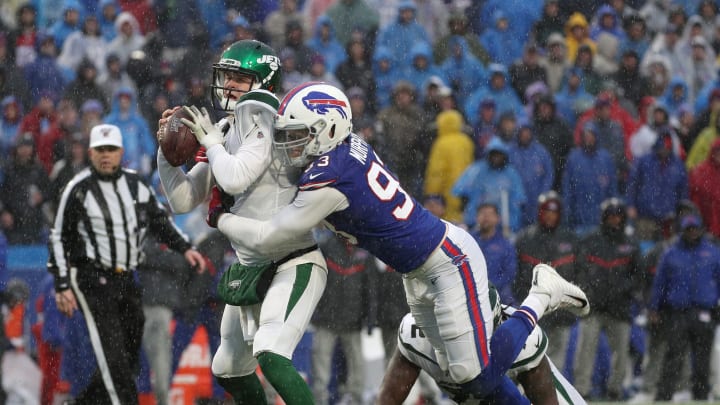New York Jets quarterback Sam Darnold projected to have top-five passing season in franchise history

It was an offseason spent by general manager Douglas retooling the depth and quality on both sides of the ball for the New York Jets. But no part of the team got more of a makeover than the offensive line, something that will benefit quarterback Sam Darnold and the passing attack.
And while projections from SportsIllustrated.com have Darnold taking a step forward this year and producing a season that would be a top five passing season in franchise history, it is still an indictment on this organization's decades long wilderness trek to find a replacement for Joe Namath.
In the here and now, however, Darnold's progress and projections are positives for the organization. The rebuilding of the offensive line this offseason by Douglas, in his first full offseason with the Jets, should only aid Darnold's maturation.
This is more than slapping some paint on decaying and rotting shingles by Douglas. Instead, he revamped the offensive line entirely to the point that there could be four if not five new starters on the line come Week 1.
The moves were significant and solid from Douglas in protecting his franchise quarterback. Darnold has shown flashes of promise and plenty of potential. But it is difficult to be consistent throwing from underneath a pile of pass rushers.
The Jets re-signed steady guard Alex Lewis who Douglas brought in via a trade with the Baltimore Ravens before last season. Everyone else is brand new to the line, most notably additions such as guard Greg van Roten, center Connor McGovern and right tackle George Fant in free agency. First round pick Mekhi Becton figures to be the starting left tackle come Week 1.
Each player brought in represents a significant upgrade at their individual position. And even if outside Becton they weren’t big names (none of the offensive linemen brought in by Douglas have a Pro Bowl appearance), all of them individually and collectively help the quality of the line in meaningful ways.
All of this means that Darnold will have more time in the pocket with the ability to pick his wide receivers out down the field. He has shown when he has time, he has the ability and arm strength to make plays down the field.
The Jets also upgraded their targets for Darnold, even as they lost wide receiver Robby Anderson in free agency to the Carolina Panthers. But in adding wide receiver Breshad Perriman and drafting Denzel Mims, the Jets significantly upgraded their talent at wide receiver.
Perriman had a higher yards per catch (17.9) than Anderson (15.0) last year. Perriman also had more touchdowns (six) than Anderson (five) and did so on significantly fewer targets (Perriman had 69 targets and Anderson had 96). It doesn’t mean that Perriman is an instant upgrade, but couple his production with his speed (he actual is a hair faster than Anderson based off their NFL Draft workouts) and suddenly, the Jets can potentially match the production lost with Anderson’s free agency move.
That the Jets also added a potentially elite wide receiver with good size and speed in Mims balances the Jets offense significantly.
Darnold showed over the second half of the year that he is capable of much more than simply managing a game. He improved dramatically, flipping the script on his first half with 13 touchdowns and four interceptions as the Jets went 6-2 to close out the season.
With an improved offensive line and better weapons, Darnold could and should take another step forward in his development. SportsIllustrated.com is projecting that he has 3,691 passing, 22 touchdowns and 14 interceptions in 2020.
For context, the projections of 3,691 passing yards in 2020 by Darnold would be the fifth-best passing season in Jets franchise history. The touchdowns thrown would be tied for eighth.
Not bad, if the projections hold true, for a third-year quarterback on a rebuilding team.
